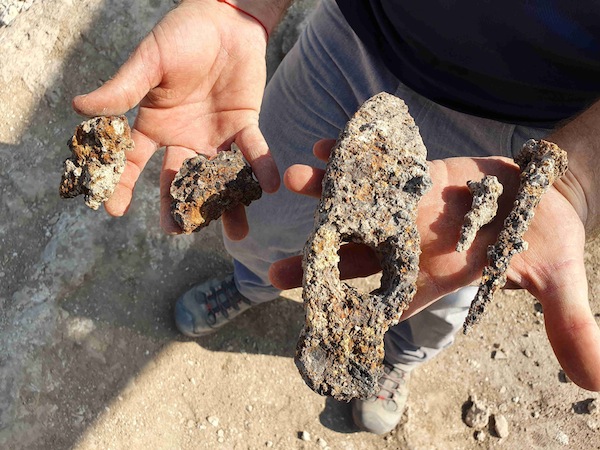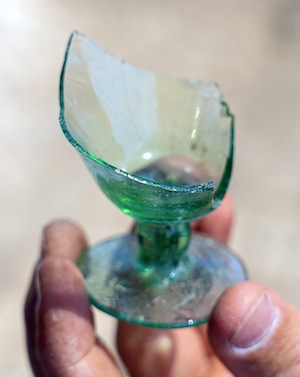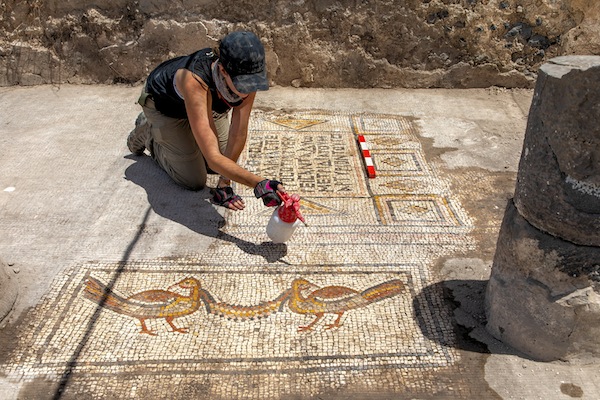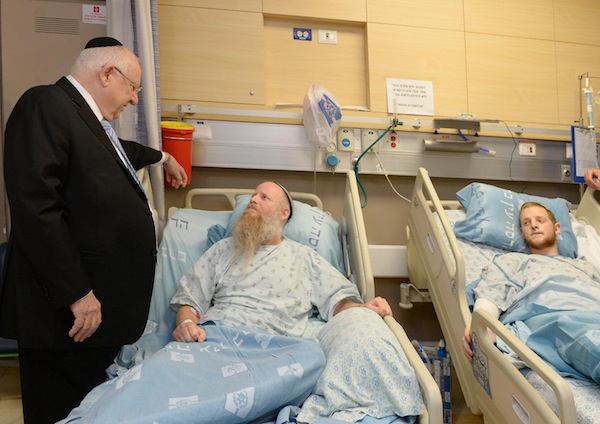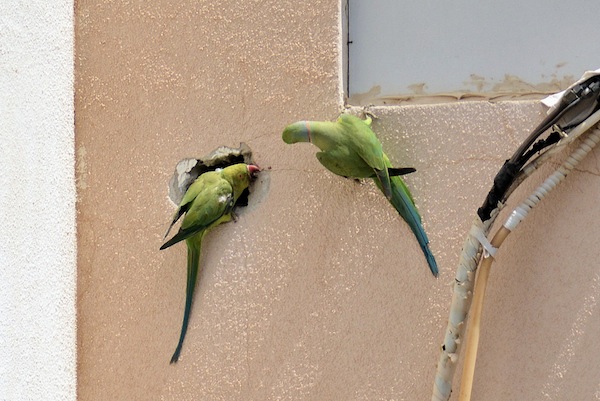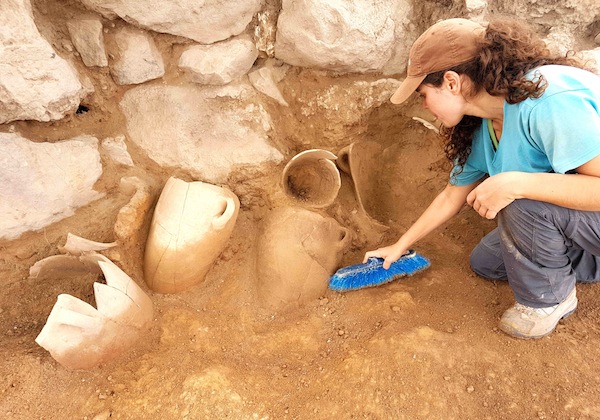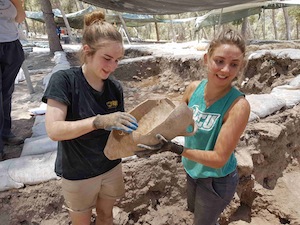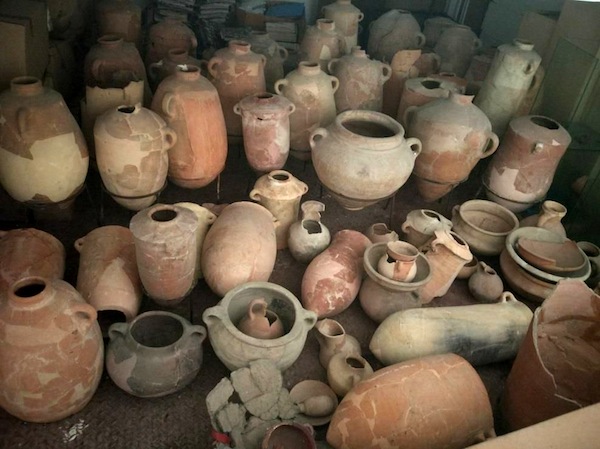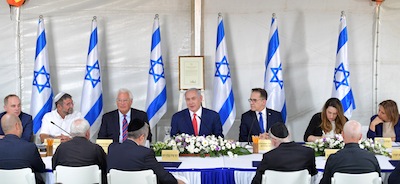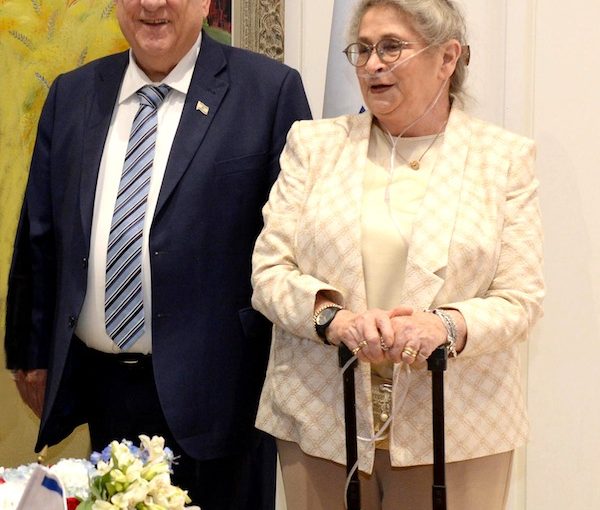A mosaic revealed during the excavation of the “Burnt Church” in Hippos. (photos by Michael Eisenberg via Ashernet)
A mosaic was revealed during the excavation of the “Burnt Church” in Hippos, which was built in the second half of the fifth or in the early sixth century CE and was probably burnt down during the Sasanian conquest in the beginning of the seventh century. According to the researchers, the descriptions in the mosaic, along with the location of the church, overlooking the Sea of Galilee, raise the connection to the “Feeding the Multitude,” the miracle performed by Jesus in the area, according to the New Testament. “There can certainly be different explanations to the descriptions of loaves and fish in the mosaic, but you cannot ignore the similarity to the description in the New Testament: for example, from the fact that the New Testament has a description of five loaves in a basket, or the two fish depicted in the apse, as we find in the mosaic,” said Dr. Michael Eisenberg, head of the excavation team in Hippos on behalf of the Institute of Archeology at the University of Haifa, along with colleague Arleta Kowalewska. The excavation of the church specifically was placed in the hands of Jessica Rentz from the United States, who has exposed its entire internal area.
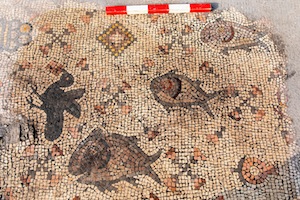 During the preservation process, headed by Yana Vitkalov from the Israel Antiquities Authority, most of the mosaic area was cleaned and preserved, and most of its decorations and two inscriptions in Greek were exposed. The first one tells about the two fathers of the church, Theodoros and Petros, constructing a sanctuary for a martyr, while the second one, which is located inside a medallion at the centre of the mosaic, exposes the name of the martyr, Theodoros. An initial reading of the inscriptions was done by Dr. Gregor Staab from the University of Cologne in Germany, expedition epigraphist.
During the preservation process, headed by Yana Vitkalov from the Israel Antiquities Authority, most of the mosaic area was cleaned and preserved, and most of its decorations and two inscriptions in Greek were exposed. The first one tells about the two fathers of the church, Theodoros and Petros, constructing a sanctuary for a martyr, while the second one, which is located inside a medallion at the centre of the mosaic, exposes the name of the martyr, Theodoros. An initial reading of the inscriptions was done by Dr. Gregor Staab from the University of Cologne in Germany, expedition epigraphist.
Eisenberg continues to be cautious about the interpretation of the new mosaic. “Nowadays, we tend to regard the Church of the Multiplication in Tabgha, on the northwest of the Sea of Galilee, as the location of the miracle, but with careful reading of the New Testament, it is evident that it might have taken place north of Hippos within the city’s region.”


